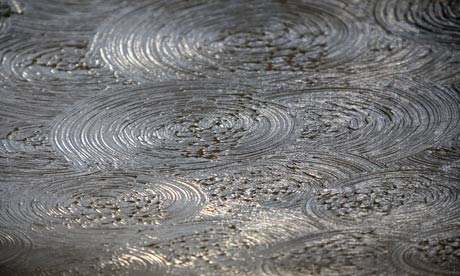
At least 17,000 students slept in university bedrooms that contained asbestos last year, figures have revealed.
The substance is harmless when left undisturbed, but can be deadly if damaged and is single greatest cause of work-related deaths in the UK.
Although universities have asbestos management procedures, campaigners have raised concerns that students may not report damaged asbestos because they do not know it is there. Several universities have admitted they do not tell students that there is asbestos in their bedrooms.
The Association of Teachers and Lecturers says it is "deeply concerned" about the extent of asbestos in universities, which has been exposed following Freedom of Information requests by the Guardian.
A spokesman says: "ATL has campaigned hard for a national audit to check for the presence and state of asbestos in all education establishments and for its safe removal. This discovery shows how necessary and urgent this is.
"We call on the government to take immediate action to ensure these bedrooms are checked, made safe and have the asbestos removed."
Out of 88 universities that responded to questions about asbestos, 38 confirmed they are providing rooms for students that contain asbestos. Of these, the University of Warwick has the most, with 2,313 bedrooms.
The university says it does not tell students that their bedrooms have asbestos in. But it adds: "All students in university accommodation are under an obligation to report damage of any kind as soon as possible and are aware that they can incur a fine for non-reporting."
A spokesperson says: "The material containing asbestos in these rooms is fully sealed and completely safe, fully in line with all statutory requirements and good practice. We have a range of systems in place to ensure any damage in student accommodation is dealt with promptly, including a very active residential warden and tutor scheme."
Dr John Moore-Gillon, an honorary medical adviser to the British Lung Foundation, says: "The presence of asbestos which is sealed inside the fabric of university accommodation isn't a problem in itself. Indeed, there are likely to be millions of people around the country living and working safely in buildings in which asbestos is present.
"However, problems can arise if the asbestos is disturbed and the fibres are released into the air and inhaled. Renovations and even DIY could create a risk, so it's a sensible step for everybody – not just university students – to know where asbestos might be found in their homes and accommodation.
Cardiff University, which has around 1,500 student rooms containing asbestos, also admits that students are kept in the dark over the substance. A spokesperson says: "Students are not told about the presence of asbestos in their rooms – the asbestos is in the form of artex and this material is recognised as being low risk."
She adds: "The health, safety and security of the students at Cardiff University is our main priority. If anything is reported or identified as deteriorated, or posing any additional risk, options are considered urgently, including removal."
The Health and Safety Executive, a public body concerned with workplace safety, says in a statement: "All universities must ensure they have effective arrangements in place to manage the risks so that staff and students are not exposed to asbestos fibres. As long as asbestos is managed in compliance with the legal requirements and according to the HSE's published guidance, there is no significant risk in leaving it in place."
Asbestos was used extensively in the UK for insulation, fireproofing and other building purposes. Laws in 1985 and 2000 have now banned the substance as a building material, but any property built earlier can contain asbestos. Undamaged, it poses no risk, but asbestos fibres released when it is disturbed can cause cancer. Around 4,500 people die every year because of the material.
Campaigners have already called for asbestos to be removed from schools, with MP Jim Sheridan calling it a "national scandal". In 2011, the Department for Education estimated that asbestos was present in more than three-quarters of schools. However, the Department of Education said at the time: "If asbestos is not disturbed or damaged, then it is safer to leave it in situ, with strong systems in place to contain and monitor it."
• This article was amended on 27 August to change the number of affected bedrooms at Warwick from 2,741 to 2,313

